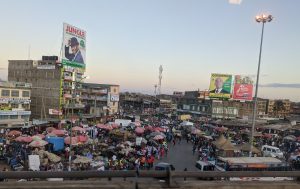It has already been four weeks since I arrived in Kenya, and I have enjoyed every bit of my time here. My internship is in a rural area of Kenya, called Kianyaga. However, I also had the chance to stay in Nairobi and experience urban Kenyan life. I decided to dedicate this blog post to providing a practical guide for future interns in Kenya, focusing on the contrast between urban and rural life in Kenya.
Urban experience in Kenya: Nairobi
Nairobi is a very fun city. There is something for everyone. However, it does take some adjusting. To have the best experience in Nairobi, there are a few things one needs to be aware of. Here are essential lessons I have learned:
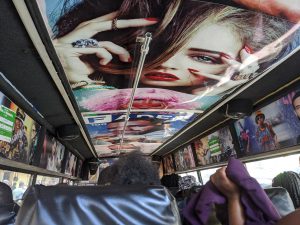
Getting around: matatu, bolt/uber, bodaboda…
There are several modes of transportation in Nairobi. Uber does exist, alongside Bolt, which is a similar app-based taxi service. Bodabodas (motorcyclist drivers) can also be ordered by using Bolt. Finally, the streets of Nairobi are full of colourful buses called matatu. I discovered that every matatu is unique: each has a dedicated theme and is decorated according to that theme, inside and out. Some even have a playlist that fits the matatu theme. When getting inside a matatu for the first time, I realized that Canada’s public transport needs to step up its game. The only downside of matatus is the lack of indication as to their itinerary. Local friends are your only chance of knowing where you should go to take the right matatu.
Get a local SIM card
Having a local SIM card is a must for data but also as a payment method. M-Pesa is a money transfer app linked to a local SIM card. It is the main method of payment in Nairobi and is used to send money to individuals, to pay for goods at a store, or even to withdraw money.
Don’t take out your phone in the CBD (downtown area)
Nairobi is informally called Nairobbery. Pickpocketing is very common, both for tourists and locals. Kenyans will only use a non-expensive cell phone (flip phone) while walking around the city. I have very few pictures of Nairobi CBD for that reason. I once took out my cell phone in a matatu and my friend closed the window beside me as it could get snatched by someone outside.
Don’t navigate Nairobi’s CBD on your own at first.
First, you need to know where you are going. Kenyans themselves do not ask for directions from fellow Kenyans. Second, Nairobi CBD can be overwhelming. The streets are full of people, cars, matatu (public buses), and bodas (motorcycles). The general rule of Nairobi driving is: “if there is space, I go”. The concept of car lanes, one-ways, direction of traffic, or streetlights is secondary. Kenyans have mastered the art of calculating the speed of incoming traffic to be able to cross Nairobi streets. Third, you can’t take your phone out to look up directions without risking being robbed. The best way to go is to move around Nairobi CBD with a local friend until you adjust to the ways of the city.
Make local friends!
Having the help of local friends, at least at first, is very helpful. The good thing is that Kenyans are very nice people, easy-going and ready to help.
The rural experience in Kenya: Kianyaga
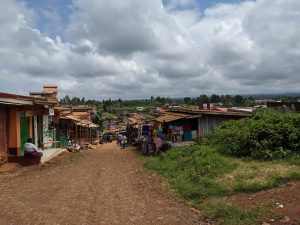
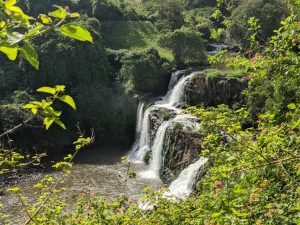
Rural life varies greatly from urban life in Kenya. It is laid back and slow-paced. Kianyaga, where I am located, is a small town very near to Mount Kenya. Going around in bodas is my favourite activity as I can admire the scenery: driving through the forest, rivers, and waterfalls, or passing by fields of tea, coffee, banana, and rice plantations.
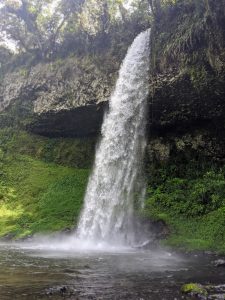
The first thing to know for newcomers in rural Kenya is: get ready to be noticed. Locals are very excited to talk with a muzungu (white person) and to welcome them. Walking down the streets of Kianyaga or while riding a boda, I hear locals greeting me: “Muzungu, how is you?” “Karibu Kenya (Welcome to Kenya)”. Children and adults will follow me, either to ask to touch my hair or simply to talk. Getting all this attention was overwhelming at first as I was still figuring out local customs. However, it didn’t take long before I was integrated into the community and felt very comfortable living there.
The second important element in rural Kenya is the language barrier. The official language is English, and the national language is Kiswahili. However, in rural areas, people speak the language of their tribes first, Kiswahili second and English last. In Kianyaga, the tribe language is Kikuyu.
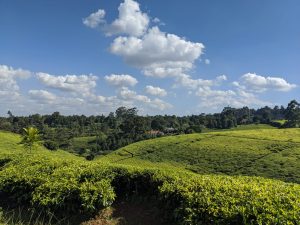
The last element about rural Kenya relates to food. Kenyans are self-sufficient in terms of food. Most will have their own chickens, at least one goat or cow, and banana and avocado trees on their properties. Most rural households will grow crops, mainly tea, coffee, maize (corn), rice, and garden vegetables. This means that I get to buy fresh products, straight out of the farms. I found it hard at first to know where to buy what I needed; there are no stores selling everything. Instead, I needed contacts for each product (eggs, farm milk, chapati, etc). Once I did get contacts for everything I needed, the freshness of the products made it worth the wait. Sometimes the products were too fresh. Here, when you want to buy chicken, it comes straight from the farm, alive, something I did not know until I bought one. Let me just say that it was an interesting afternoon.
Overall, my experiences in both rural and urban Kenya have been incredible. Kenyans will make you laugh and feel welcomed. Time is flying by, and I know that I will get to the end of my stay feeling like I wished I could have stayed longer.



